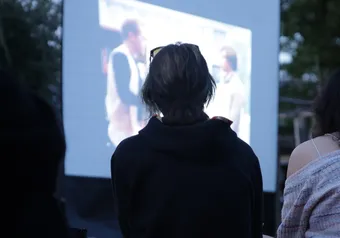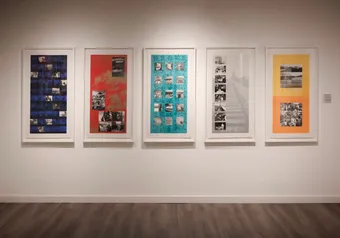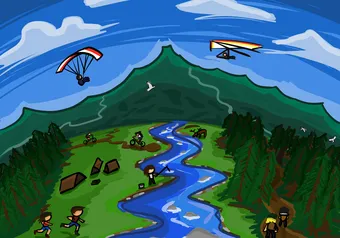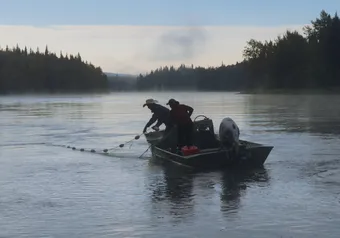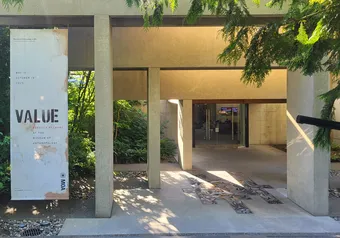On October 13 and 14, UBC Research and Innovation organized the UBC Climate Change Research Symposium. This two-day event featured groundbreaking research from departments across both UBC Vancouver and UBC Okanagan. The Ubyssey attended day two of the symposium, which consisted of three panels and a keynote presentation by Naomi Klein, award-winning journalist and the new professor of climate justice in the department of geography at UBC.
Klein’s keynote speech honed in on the intersection of climate justice and housing justice. To do so, she provided two main case studies: the 2018 Paradise, California fire and the 2021 BC heat dome.
Klein explained that in some situations, climate change is not the “real killer.” Sometimes, what really leads to casualties and public harm is not the climate-exacerbated natural disasters themselves, but the socially inequitable infrastructure and systems that failed to protect marginalized populations. In other words, climate disasters that could have been survivable for vulnerable populations became lethal due to existing socially-unjust systems.
“A failure to attend to existing and widening social and economic inequalities make the impacts of the climate crisis more deadly and socially divisive,” said Klein. This relationship renders climate change a “threat multiplier.”
Essentially, this means that “whatever was bad without extreme weather — from a chronic lack of affordable housing to repressive policing and racialized communities to surging xenophobia to colonial economic policies — becomes catastrophic.”
Klein urged researchers and educators to “enact climate solutions that reflect our commitment to UNDRIP (United Nations Declaration on the Rights of Indigenous Peoples) and the human rights of Indigenous peoples.”
One example Klein cited was Hurricane Ida. Upon reaching New York, the hurricane caused flooding that, as Klein noted, should have been survivable. For most New Yorkers, it was. However, the New York sewer system was in need of repair and many homes that did not meet basic safety standards “filled up like swimming pools” and killed their inhabitants.
All of the people who died in the event “were recent immigrants from Nepal, Colombia and Ecuador,” said Klein. This catastrophe is a result of a housing crisis in the world’s most expensive cities which disproportionately impacts “vulnerable communities — particularly immigrants who are undocumented and cannot complain for fear of deportation.”
Klein then transitioned into her main case study: Paradise, California. In November 2019, Paradise became “the site of the deadliest wildfire in California’s history.”
There were several factors that led to this devastation. Klein cites four: overdevelopment, “poorly maintained overground electrical lines,” “suppression of Indigenous cultural fire methods” and most of all, the climate crisis.
Importantly, as Klein points out, most of the people who lost their lives in the fire were elderly, disabled and living alone. As she described, “[this] is a powerful illustration of the fact that care work is climate work” because almost all elderly residents in collective care, long term care, nursing home group homes and hospitals survived because their caregivers acted as first responders.
After the fire, thousands of residents evacuated to Chico. Upon their arrival, they transformed the parking lot of a local Walmart into a campground for evacuees. They were also supported by North Valley Mutual Aid which Klein described as a “grassroots disaster response group.”
Klein quoted Mark Steadman, a professor of geography at Chico State University, who said that “a tsunami of fear and terror rolled down the hill from Paradise, but that tsunami was buffeted by a blanket of love and comfort in the Walmart parking lot.”
Unfortunately, this sense of community didn’t last. For context, “one month before Paradise burned, the county that includes both Chico and Paradise, which is called Butte County, declared a housing state of emergency,” explained Klein. This means that Chico already had its own “chronically underhoused” community.
When Paradise evacuees arrived at Chico, many members of the community’s chronically under-sheltered members also showed up to food, clothing and camping supplies distribution sites.
“Why wouldn’t they? Finally, there was some help,” said Klein.
Unfortunately, the Paradise evacuees and unhoused local population at Chico were unwillingly placed in competition with one another.
Klein described this as a “hierarchy of the deserving and supposedly undeserving homeless.”
“The fire victims were cast as innocent and worthy of aid,” she said, “and the more chronically unhoused were cast as dangerous invaders and interlopers.”
Klein cited incidents where a local church hired biker gangs to “protect” the “newly homeless fire victims from the chronically unsheltered.”
After initially donating some supplies to the evacuees, Walmart eventually “exercised their property rights” and essentially kicked out the community from its parking lot. Afterwards, many of the former Paradise residents were forced to camp in Chico’s public parks along with its pre-existing unhoused populations.
This situation was made worse by the fact that the cost of rent actually increased significantly in Chico due to “increased demand,” despite the fact that the “demand” mostly came from an increased unhoused population now largely composed of fire evacuees.
There were also attempts to criminalize camping in parks “and to empower police to evict people living in tents despite having no provision for alternative housing.” This took place during the COVID-19 pandemic — i.e., during a public health emergency.
Alex Brown, former vice-mayor and current council member of the city of Chico, introduced the Green New Deal to Chico which, according to Klein, would have indirectly addressed the poverty and inequity faced by Chico’s unhoused population. However, it was not implemented due to a lack of funding.
“[This is] what happens when locally-developed climate justice plans are denied the powers and financing that they need to rapidly turn their vision into reality,” said Klein.
Paradise was rebuilt after the fire, but not with its former residents in mind. Klein called this a case of “climate gentrification” in which the price of housing after the fire was so high that many former low-income residents could not return.
Klein also explained how racial discrimination was targeted towards the unhoused Chico population, many of whom were Indigenous.
There were viral videos created by a group called Citizens for a Safe Chico which “painted the entire unhoused population of Chico as violent, drug-addled transient vagrants, which is a very racially loaded term for Indigenous people in the area who were overrepresented in those encampments.”
Another example of an intersection of housing injustice and climate injustice closer to home is last June’s heat dome. During this event, many low-income renters experienced even worse-than-average heat because they “couldn't afford fans, let alone AC units. But even if they could afford them, renters generally can't install units like that without their landlord's permission.”
“If landlords do make those kinds of investments, which cost them money, there's fear that they'll come with a rent hike and lead to so-called rent evictions,” because low-income renters may no longer be able to afford their rent.
In some cases, landlords and property managers failed to turn off furnaces that actively blasted heat during the heat dome, despite tenants begging them to. Klein cited the Vancouver tenants union, who described this as a “potentially deadly intimidation tactic” in which landlords tried to make the tenants’ living conditions so unbearable that they left and they could increase the cost of rent.
In other cases, some landlords refused to let tenants use the AC or fans because they didn’t want to pay an increased amount of electricity. Some actually removed the AC altogether.
“It's time we make maintaining high indoor air quality and energy efficient air conditioning part of our standard expectations of housing,” said Klein.
Klein emphasized that effective responses to the climate crisis must acknowledge that people are dealing with several other crises as well, such as chronically unaffordable housing. Thus, any climate justice solution must address these crises simultaneously.
To circle back to Klein’s call to action, “we should be building just and inclusive climate solutions that work to dismantle historic and editing barriers faced by marginalized communities … in partnership [with] the most impacted.”
First online
Share this article



